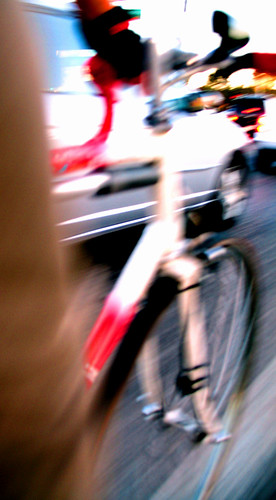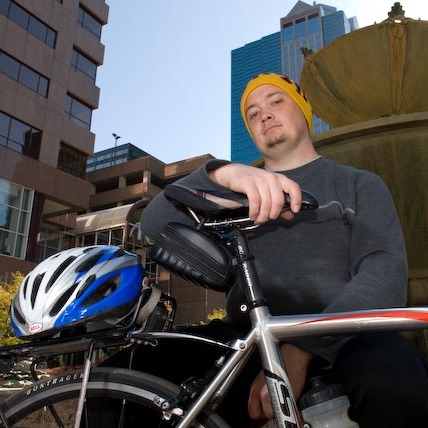 1. If you're riding on a roadway that's been traffic free for a while, and you notice an oncoming car off in the distance, there is usually a car coming up behind you. Almost always, both cars will cross paths at the exact moment that the car going your way is attempting to overtake you.
1. If you're riding on a roadway that's been traffic free for a while, and you notice an oncoming car off in the distance, there is usually a car coming up behind you. Almost always, both cars will cross paths at the exact moment that the car going your way is attempting to overtake you.
I don't know why, but this "law" usually holds true. This is a dangerous situation for a number of reasons. If either you or the oncoming car must swerve for any reason, you are the one who has the most to lose. You'll either swerve into or in front of the overtaking car, or it will swerve into you to avoid collision with oncoming traffic.
2. Debris, pot-holes, cross-traffic, car doors opening into traffic, storm drain grates and other hazards usually appear in front of you out of nowhere while you're busy worrying about traffic behind you.
Again, if you're worried about what's behind you, you're not paying attention to what's in front of you. Many motorists will get angry that you're costing them precious of seconds of their lives. Many will honk, yell, or possibly even throw stuff at you. None of them want the hassle of dealing with the results of running you over, even if it's just a small court case and a slap on the wrist (which is likely all that's bound to happen, at least here in KC).
What's a cyclist to do?
Be mindful of what's behind you, but pay closer attention to what's ahead. You can change what's in front of you by re-positioning yourself and you're powerless over what's behind you. Motorists will not run you over intentionally! The number of truly malevolent drivers is almost nil. The number of inattentive drivers is pretty high. The best way to avoid these situations is to take the lane, be visible and force the traffic behind you to hold back until it's safe to pass.
- Keep your sights far, far ahead.
- Identify active threats (road hazards, traffic) and potential threats (intersections, parked cars) early.
- If there are hazards or oncoming traffic, TAKE THE LANE instead of hugging the curb. If moving outward into the lane, I'll often signal as if I'm taking a left turn, simply to make it clear that I am moving to the left, and to grab the attention of motorists behind me.
- Be seen. Reflective, bright-colored clothing and lighting make you more conspicuous and less likely to be a victim to inattentive motorists.
- If riding with someone else, identify road hazards to others out of courtesy. Pointing to upcoming hazards, signalling to move left or right within the lane, and announcing overtaking traffic are commonplace on group rides, and applicable when commuting with other cyclists.
- Maintain 360° awareness as you can, but not at the cost of what's ahead.
Creative Commons photo credit: "Traffic On El Camino Real" by our friend Fritz.



1 comment:
I love it when motorist pass acting like a jerk, risking not only my life, but other road users. Then I pass them stuck in traffic less than a minute later, and they can never catch up again....
Post a Comment